Osprey
Books Recommendation |
||
|
|
|
|
Osprey
Books Recommendation |
||
|
|
|
|
| New Vanguard Series | ||||
Frontpage |
Description/contents |
Author |
Publisher |
Buy from |
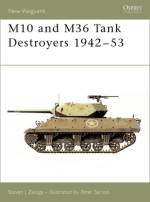 |
New Vanguard 57 M10 and M36 Tank Destoryers 1942-53 The US Army had a unique tactical doctrine during World War II, placing the emphasis for tank fighting on its Tank Destroyer Command whose main early-war vehicle was the M10 3-inch Gun Motor Carriage, based on the reliable M4A2 Sherman tank chassis. This durable and versatile vehicle saw combat service from the North Africa campaign in 1943. By 1944, its gun was not powerful enough and it was rearmed with the new 90 mm gun, becoming the M36 90mm Gun Motor Carriage. This book details one of the only US armoured vehicles capable of dealing with the Panther and Tiger during the Battle of the Bulge. Paperback; August 19 2002; 48 pages; ISBN: 1841764698 |
Steven J.Zaloga | ||
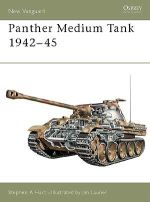 |
New
Vanguard 67 Panther Medium Tank 1942-45 The Panzerkampfwagen V Panther is one of the best-known German tanks in existence and is considered one of the greatest tanks of World War II. When in June of 1941, Germany invaded Russia, Panzertruppe encountered KV series and T-34/76 tanks, far superior in firepower and armour protection to any Panzer in service at the time. It was therefore decided to design a new more powerful medium tank, which could be quickly put into production. This book details the result, the Medium Battle Tank, available for service in January 1943. Later models ensured that it became one of the most feared tanks of WWII. Paperback; February 19 2003; 48 pages; ISBN: 1841765430 |
Stephen A Hart | ||
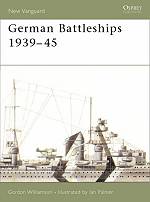 |
New
Vanguard 71 German Battleships 1939-45 In this, the first of a five volume series covering the capital ships of the German Navy of World War II, Gordon Williamson examines the design, development and operational use of the battleships used by the Kriegsmarine. The ‘Schlesien’ and ‘Schleswig-Hostein’ were used mostly as training ships until the end of the war when they took part in bombardment of Soviet troop movements in East Prussia. The ‘Scharnhorst’ had a successful career until her sinking at the battle of the North Cape, and the ‘Gneisenau’ with her ignominious end as a block-ship. Bismarck's short but glorious career and Tirpitz's lonely vigil in Norway's distant Fjords until sunk by RAF bombers using the massive 'Tallboy' bombs are also covered. Paperback; March 11 2003; 48 pages; ISBN: 1841764981 |
Gordon Williamson | ||
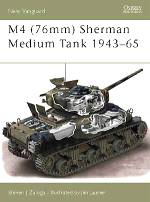 |
New
Vanguard 73 M4 (76mm) Sherman Medium Tank 1943-65 The M4 Sherman tank was the mainstay of the Western allies between 1942 and 1945. Fast and modern it was a big success and was transported as far afield as Russia and North Africa. The American Chief of Staff claimed in November 1943 it was 'hailed widely as the best tank on the battlefield today…’. However, by the Normandy invasion of June 1944 this was not the case: the new German heavy tanks such as the Panther and Tiger were completely outclassing the Sherman. This title covers the M4 version armed with the 76 mm gun, examining developments such as the HVSS suspension, using much new archive material. Paperback; April 20 2003; 48 pages; ISBN: 1841765422 |
Steven J.Zaloga | ||
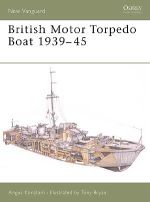 |
New
Vanguard 74
British Motor Torpedo Boat 1939-45 During the Second World War, flotillas of the Royal Navy's Motor Torpedo Boats and other coastal forces fought a deadly war for control of the English Channel and the North Sea. These small, fast boats attacked enemy convoys, escorted freighters, landed secret agents and even raided enemy ports. Unsung heroes, these craft and their tiny crews helped stave off defeat in the dark days of 1940. The same vessels then took the fight to other waters, and by the end of the war, British MTB's had seen service in the Mediterranean, the Baltic and the Far East. This book examines the development and operation of these frail, sleek little warships, and describes the way they were manned and how they fought. Paperback; June 20 2003; 48 pages; ISBN: 1841765007 |
Angus Konstam | ||
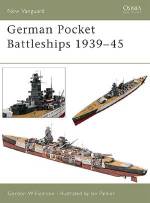 |
New
Vanguard 75
German Pocket Battleships - 1939 - 45 After the end of World War I, the German Navy came up with the concept of the Panzerschiffe, or Pocket Battleship, as a method of circumventing treaty limitations on the size and types of ship Germany was permitted to build. New, more modern production methods, where welded construction prevailed over the older riveting process, were combined with the development of modern engines capable of fast speeds and a very powerful armament, far superior to that on any enemy Cruisers. This book covers these three sister ships, the ‘Deutschland’, the ‘Admiral Graf Spee’ and the ‘Admiral Scheer’, which formed the core of the Kriegsmarine's fighting power at the start of World War II. Paperback; May 20 2003; 48 pages; ISBN: 1841765015 |
Gordon Williamson | ||
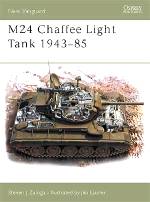 |
New
Vanguard 77
M24 Chaffee Light Tank 1943-85 The history of US light tanks during World War II is a chequered one. The Light Battalions of US Armored Divisions were initially filled with M3A1 and M5 Stuart tanks, however, on the battlefields of North Africa it was realised that these were disastrously under armoured and gunned, and a replacement, or the abandonment of light tank doctrine, was desperately needed. It wasn't until the last few months of WWII that the M24 Chaffee came into service and it was extensively used in combat from the Battle of the Bulge to the final campaigns in Germany. This book will trace the history of this design, its combat record in World War II, its many variants, and its extensive combat record post 1945. Paperback; June 20 2003; 48 pages; ISBN: 1841765406 |
Steven J.Zaloga | ||
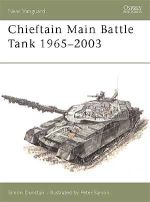 |
New
Vanguard 80
Chieftain Main Battle Tank 1965-2003 The concept of the Main Battle Tank emerged from the Centurion Universal tank that was developed at the end of World War II. Development of its successor began as early as 1951. The Chieftain incorporated significant innovations including a reclining driver position and two-piece ammunition for greater survivability. The tank entered service in 1967 and was the heaviest armed and armoured MBT within the NATO alliance. The Chieftain saw combat during the Iran-Iraq War, with the Kuwaitis during the 1990 Iraqi invasion and with the British Army during the Gulf War of 1990–91 as special-purpose variants. This book explores the design, development and operation of one of the most influential vehicles used in modern warfare. Paperback; September 25 2003; 48 pages; ISBN: 1841767190 |
Simon Dunstan | ||
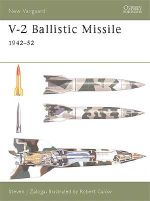 |
New
Vanguard 82
V-2 Ballistic Missile 1942-52 The German A-4 ballistic missile, better known by its propaganda name of V-2, was the world's first successful ballistic missile, breaking through the atmosphere to reach its target quicker. It was a forerunner of Cold War ballistic missiles and its combat use in 1944-45 set the pattern for the use of Scud ballistic missiles in recent decades. The V-2 offensive lasted from September 1944 until March 1945 with over 3,000 rockets being launched. This book examines the combat record of the V-2 in World War II, with a special focus on how a German missile battalion actually prepared and fired its missiles. Paperback; August 20 2003; 48 pages; ISBN: 1841765414 |
Steven J.Zaloga |
||
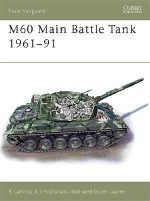 |
New
Vanguard 85
M60 Main Battle Tank 1961-91 Entering service in the early 1960s, the M60 tank was in production for 23 years and formed the backbone of US Army and Marine armoured units during the Cold War. Over 15,000 were built in four basic models: the M60, M60A1, M60A2, and the M60A3. Although the M60 had been phased out of US Army service by the time Iraq invaded Kuwait in 1990, M60s were amongst the first Allied tanks to enter Kuwait City with the US Marines. This book examines the design and deployment of the M60, a very widely used vehicle that is still in service today. Paperback; September 25 2003; 48 pages; ISBN: 1841765511 |
Richard Lathrop | ||
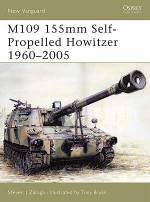 |
New
Vanguard 86 M109 - 155mm Self Propelled Howitzer 1960-2005 Entering service in the early 1960s, the M109 Self-Propelled Howitzer has been in production for 34 years and forms the backbone of US Army and Reserve artillery units. The M109A6 is the latest development of the M109 series and incorporates advanced fire control systems that enable it to have its first rounds on target less than 60 seconds after arriving at firing location. This ability to shift quickly between moving and firing modes avoids counter battery fire and ensures battlefield survivability. This book details an impressive and versatile weapon that has served around the globe in Southeast Asia and in Operations Desert Shield and Desert Storm. Paperback; February 5 2005; 48 pages; ISBN: 1841766313 |
Richard Lathrop | ||
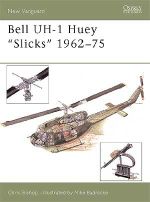 |
New
Vanguard 87 Bell UH-1 Huey "Slicks" 1962-75 The US Army requirement for a light utility helicopter was formulated after the Korean War. Bell's Model 204 design won a competition in 1955, and was given the military designation H-40, later renamed the HU-1 Iroquois. The original design called for a helicopter that could be used for transport, airborne battlefield command and control, medical evacuation, fire support co-ordination and search and rescue. Later its missions would be expanded to include troop insertion/extraction, armed escort and special operations. This title details all the technological background behind the development and use of the Huey “Slick” in Vietnam, as well as covering all the major uses that this transport aircraft was put to. Paperback; October 22 2003; 48 pages; ISBN: 1841766321 |
Chris Bishop | ||
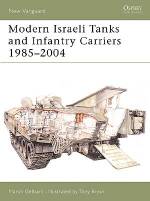 |
New
Vanguard 93
Modern Israeli Tanks and Infantry Carriers 1985-2004 Over the last two decades, the Israel Defence Force (IDF) has introduced a variety of new AFVs. Old models such as the M48 and M60 have been improved beyond recognition, in the form of the Magach 7. The performance of Israel's indigenous Merkava tank has been similarly enhanced with new variants and the new Merkava 4 MBT has recently entered service. Israeli infantry have also received machines such as the Achzarit assault carrier, the Puma combat engineer vehicle and the Nagmachon and Nakpadon (tank-based carriers intended for low intensity conflicts). This book examines the design, modification and combat history of these formidable fighting machines. Paperback; February 25 2004; 48 pages; ISBN: 1841765791 |
Marsh Gelbart | ||
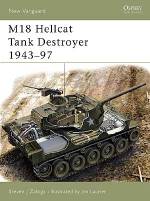 |
New
Vanguard 97
M18 Hellcat Tank Destroyer 1943-97 The M18 76mm Gun Motor Carriage was developed for the US Army's Tank Destroyer Command. It was the only tank destroyer deployed during World War II actually based on their requirements for speed and firepower. This book examines the development of this vehicle, the controversies over the need for high-speed tank destroyers, and its actual performance during World War II. Special emphasis is placed on examining its performance in its intended mission. Coverage also includes derivative vehicles of the M18 such as the M39 armored utility vehicle. Paperback; April 27 2004; 48 pages; ISBN: 1841766879 |
Steven Zaloga | ||
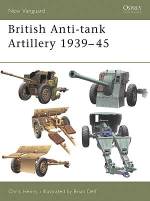 |
New
Vanguard 98
British Anti-Tank Artillery 1939-45 The rapid development of the tank as an offensive weapon following its introduction in World War I gave artillery theorists cause for concern during the 1920s and 1930s. By the beginning of World War II anti-tank guns had been developed, initially at around 37mm and 2 pounds in weight of shot. By the end of the war, monster anti-tank weapons were being developed, able to penetrate an armour thickness of up to 200mm at a range of 1,000 yards. This book explores the British efforts to keep up in a war of development, which saw heavier and more powerful guns eventually replaced by experimental ideas in an attempt to stop the German onslaught. Paperback; September 23 2004; 48 pages; ISBN: 1841766380 |
Chris Henry |
||
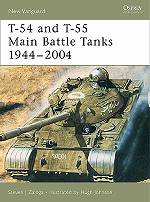 |
New
Vanguard 102
T-54 and T-55 Main Battle Tanks 1944-2004 The T-54 and T-55 tanks are the most widely manufactured tanks of all time. They have become ubiquitous to wars around the globe since the 1950s, starting with Hungary in 1956, and including the the Arab-Israeli wars of 1967, 1973 and 1982, the Vietnam war of 1967-75, the Iran-Iraq War of 1980-88, the Afghanistan conflict, Operation Desert Storm, the Yugoslav Civil Wars, and the recent conflict in Iraq. This book will examine the roots of this prolific tank family, starting with the Soviet Army’s first attempts to replace the legendary T-34 during World War II, and covering the T-43 and the T-44, the more successful T-54, and its ultimate evolution into the T-55. Paperback; July 25 2004; 48 pages; ISBN: 1841767921 |
Steven J.Zaloga | ||
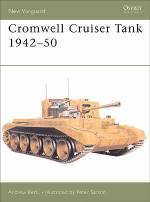 |
New
Vanguard 104
Cromwell Cruiser Tank 1942-50 For most of World War II, British tank development remained faithful to the design philosophy inaugurated during World War I. Experiences in North Africa highlighted flaws in this basic design, however, and the General Staff identified the need for a new heavy cruiser that could combine speed and manoeuvrability with increased armour and armament. The Cromwell Cruiser tank was designed as a result and soon proved itself one of the fastest and most successful tanks deployed by the Allies during World War II. This book details the design and development of the Cromwell and its many variants, from its introduction at D-Day, through its many successes in the final year of World War II and beyond. Paperback; March 10 2006; 48 pages; ISBN: 1841768146 |
David Fletcher |
||
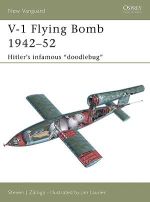 |
New
Vanguard 106
V-1 Flying Bomb 1942-52 The first deployment of the V-1 was in June 1944 when, following two years of tests, Hitler gave the order to attack England. Known to the Allies as the "Buzz Bomb" or "Doodlebug", the V-1 was the world's first cruise missile. This book explores the V-1 in detail, from its initial concept, first use in 1944, the various Allied counter-measures, and the later use of the V-1 during the Battle of the Bulge. The major foreign derivatives, including the US copy "JB-2 Loon" and numerous post-war Soviet variants, are also covered. Paperback; January 1 2005; 48 pages; ISBN: 1841767913 |
Steven J.Zaloga | ||
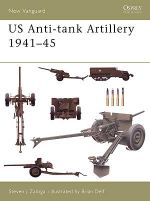 |
New
Vanguard 107 US Anti-Tank Artillery 1941-45 The US Army's development of the 37mm anti-tank gun began in response to needs identified during the Spanish Civil War. By the time it entered service in Tunisia in 1943, the gun was already obsolete, and the US began the licensed manufacture of the British 6-pdr in the hope of finding a quick solution to its artillery requirements. This in turn proved unequal to the demands of warfare in France in 1944, and further anti-tank measures were developed – rocket propelled grenades for infantry use, and weapons designed specifically for use by the Tank Destroyer Force. Paperback; April 12 2005; 48 pages; ISBN: 1841766909 |
Steven J.Zaloga | ||
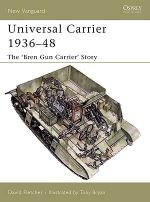 |
New
Vanguard 110
Universal Carrier 1936-48 The Universal Carrier was a fast, lightly armed vehicle developed by the British Army to carry infantry across ground defended by small-arms fire, specifically the Bren light machine gun, hence the name ‘Bren Gun Carrier’. This name would stick with the Universal Carrier and all of its future variants. This book details the Carrier, which was employed in a number of roles including carrying ammunition and towing anti-aircraft guns and trailers. All Allies used the Universal Carrier extensively during practically every World War II campaign. By the war’s end, the Universal Carrier had proved itself to be an invaluable and successful cross-country vehicle that was both agile and fast for its time. Paperback; June 12 2005; 48 pages; ISBN: 1841768138 |
David Fletcher | ||
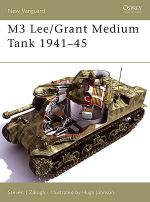 |
New
Vanguard 113
M3 Lee/Grant Medium Tank 1941-45 The highly successful 'stop-gap' M3 medium tank was designed in 1941, and as adequate turret casting facilities were not yet ready, the M3 used an unusual armament configuration patterned after a French tank. British lend-lease demands led to the design of a second turret type with the US version called the Lee and the British version the Grant. It could penetrate Panzer armor, and its explosive firepower was excellent for dealing with German anti-tank guns. This book covers the design, development, service and variants of a vehicle that was the backbone of many World War II forces. Paperback; August 10 2005; 48 pages; ISBN: 1841768898 |
Steven J.Zaloga | ||
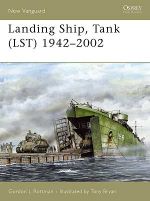 |
New
Vanguard 115
Landing Ship Tank (LST) 1942-2002 The Landing Ship Tank (LST) is one of the most famous of the many World War II amphibious warfare ships. Capable of discharging its cargo directly on to shore and extracting itself, the LST provided the backbone of all Allied landings between 1943 and 1945, notably during the D-Day invasion. Through its history, the LST saw service from late 1942 until late 2002, when the US Navy decommissioned the USS Frederick (LST-1184), the last ship of its type. This book reveals the development and use of the LST, including its excellence beyond its initial design expectations. Paperback; December 10 2005; 48 pages; ISBN: 1841769231 |
Gordon Rottman | ||
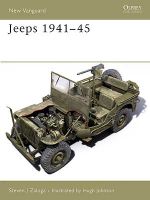 |
New
Vanguard 117
Jeeps 1941-45 The jeep was the most famous military vehicle of World War II, and its name has become synonymous with a whole class of military and civilian all-terrain vehicles. The jeep originated in a prewar US Army requirement for a simple, inexpensive, and robust vehicle for basic utility chores. Its simple design proved to be adaptable to a host of military tasks including use as a scout vehicle, battlefield ambulance, communications vehicle, and staff car. This book, covering “the savior of World War II”, focuses on the design and development of this versatile vehicle used on nearly every front of World War II. Paperback; November 13 2005; 48 pages; ISBN: 184176888X |
Steven J.Zaloga | ||
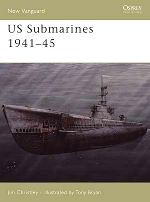 |
New
Vanguard 118
US Submarines 1941-45 Naval warfare in the Pacific changed completely with the Japanese attack on Pearl Harbor in 1941. The strategic emphasis shifted from battleships to much more lethal, far-ranging weapons systems; one of these was the submarine. This book details the design and development, classes, weapons and equipment, tactics and operational history of the US submarine in World War II. Detailed tables, photographs, and superb color plates depict the force that had an effect far beyond its size – the submarine accounted for 55% of all Japanese shipping losses, despite suffering the highest percentage loss of any unit of the United State Armed Forces in World War II. Paperback; January 10 2006; 48 pages; ISBN: 1841768596 |
Jim Christley | ||